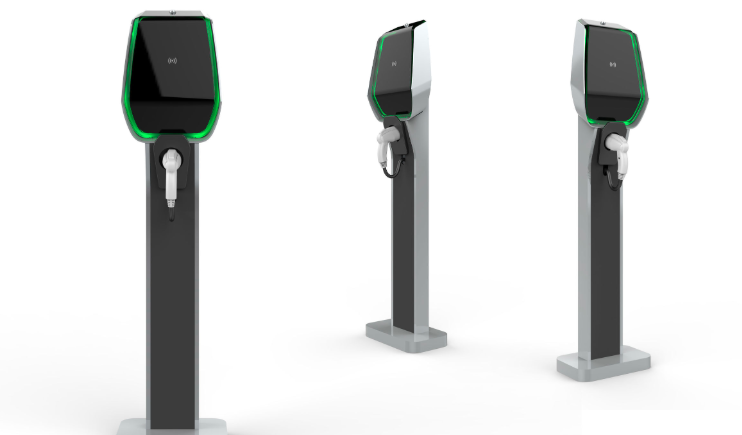charging piles for electric vehicles: powering the shift to clean mobility

as electric vehicles (evs) become increasingly popular worldwide, the infrastructure supporting them is evolving rapidly. among the most critical components of this infrastructure are charging piles for electric vehicles, which play an essential role in enabling convenient and efficient charging for ev owners. this article explores the importance of charging piles for electric vehicles, their types, benefits, challenges, and the future outlook of this vital technology.
what are charging piles for electric vehicles?
charging piles for electric vehicles are specialized stations or devices designed to supply electric energy to ev batteries. they act as refueling points, similar to gas stations for traditional vehicles, but they provide electricity instead of fuel. these charging piles come in various forms and power levels, tailored to different charging needs and environments.
charging piles can be found in public places, commercial facilities, parking lots, residential areas, and along highways, making ev ownership more practical and accessible.
types of charging piles for electric vehicles
understanding the types of charging piles for electric vehicles helps users choose the right charging solution and manufacturers to deploy the appropriate infrastructure:
- slow charging piles (ac chargers): these typically operate at power levels below 7 kw and use alternating current (ac). they are commonly installed at homes or workplaces, providing a full charge over several hours, ideal for overnight charging.
- fast charging piles (ac chargers): operating between 7 kw and 22 kw, these charging piles use ac to provide quicker charging times. they are suitable for commercial parking or public locations where users can leave their vehicles for shorter periods.
- rapid charging piles (dc chargers): delivering direct current (dc) at high power levels (from 50 kw to over 350 kw), rapid charging piles dramatically reduce charging times to minutes. these are often installed along highways or busy urban areas to enable fast top-ups during travel.
- ultra-fast charging piles: the newest generation, these charging piles provide very high power outputs (350 kw and above), targeting heavy-duty vehicles or future high-capacity evs.
See also: The Importance of Regular Commercial Cleaning for Your Business
key components of charging piles for electric vehicles
a typical charging pile for electric vehicles includes:
- charging connector and cable: different types of plugs (type 1, type 2, ccs, chademo) ensure compatibility with various ev models.
- communication systems: enable interaction between the charging pile, vehicle, and sometimes the grid or user apps for monitoring and control.
- user interface: touchscreens, buttons, or smartphone apps allow users to initiate and manage charging sessions easily.
- safety systems: protection mechanisms guard against electrical faults, overheating, and unauthorized access.
advantages of charging piles for electric vehicles
the growing deployment of charging piles for electric vehicles offers many advantages:
- convenience: with widespread charging piles, ev drivers can easily recharge their vehicles almost anywhere, reducing range anxiety.
- environmental benefits: when powered by renewable energy, charging piles help decrease overall greenhouse gas emissions linked to transportation.
- economic savings: ev owners save on fuel and maintenance costs, while businesses can attract customers by offering charging services.
- promoting ev adoption: accessible and reliable charging infrastructure encourages more people to switch from traditional combustion vehicles to electric.
challenges facing charging piles for electric vehicles
despite their importance, charging piles for electric vehicles face several challenges:
- high installation cost: setting up charging piles, especially fast chargers, requires significant investment in hardware, site preparation, and grid upgrades.
- uneven distribution: some regions have dense charging networks, while others lack adequate coverage, limiting ev adoption.
- grid capacity: large numbers of fast charging piles can strain local electricity grids if not managed properly.
- standardization issues: multiple charging standards and connectors can confuse users and complicate infrastructure planning.
- maintenance and reliability: charging piles must operate reliably in various weather conditions and environments, requiring robust design and upkeep.
innovations improving charging piles for electric vehicles
technology continues to enhance charging piles for electric vehicles by introducing:
- smart charging systems: these use real-time data and user preferences to optimize charging speed and timing, reducing costs and grid stress.
- vehicle-to-grid (v2g) capabilities: enabling bidirectional power flow, v2g allows evs to feed electricity back into the grid during peak demand periods.
- wireless charging: inductive charging piles eliminate the need for cables, offering convenience and reducing wear and tear.
- renewable energy integration: solar-powered charging piles or those connected to green energy sources minimize carbon footprints.
- modular and scalable designs: adaptable charging piles that can be upgraded or expanded to meet future demand.
conclusion
efficient, and reliable charging solutions, these piles help overcome one of the biggest barriers to ev adoption — convenient recharging. despite facing challenges such as cost, grid demands, and standardization, ongoing technological innovation and increasing investment are transforming charging piles into smarter, faster, and greener assets.
as governments and industries continue to prioritize clean transportation, expanding the network of well-designed charging piles will accelerate the transition to a sustainable future. for consumers, businesses, and society at large, the growth of charging piles for electric vehicles means cleaner air, lower energy costs, and a more resilient energy ecosystem.
embracing this change today paves the way for a more sustainable tomorrow.





